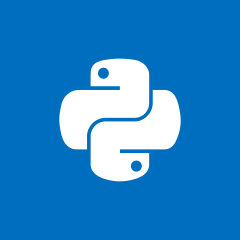根据 pandas 中的条件由公司创建一个虚拟对象
我有一个 pandas 数据框,如下所示:
data = {"firm": [1, 1, 1, 1, 2, 2, 2, 2, 2, 3, 3, 3, 4, 4, 4, 4, 4, 4], "year" : [2000, 2001, 2002, 2003, 1990, 1991, 1992, 1993, 1994, 2010, 2011, 2012, 2005, 2006, 2007, 2008, 2009, 2010], "var" : [3, 2, 1, 0.5, 5, 3, 2, 0.5, 0.5, 0.5, 0, 0, 8, 5, 3, 0.5, 0.5, 0.5]}
df = pd.DataFrame(data)
df
我想为每个公司创建一个虚拟变量,条件如下:
只要变量“var”连续两年等于或小于 0.5,“dummy”就等于 1,因此变量“dummy”如下所示:
data = {"firm": [1, 1, 1, 1, 2, 2, 2, 2, 2, 3, 3, 3, 4, 4, 4, 4, 4, 4], "year" : [2000, 2001, 2002, 2003, 1990, 1991, 1992, 1993, 1994, 2010, 2011, 2012, 2005, 2006, 2007, 2008, 2009, 2010], "var" : [3, 2, 1, 0.5, 5, 3, 2, 0.5, 0.5, 0.5, 0, 0, 8, 5, 3, 0.5, 0.5, 0.5], "dummy" : [0, 0, 0, 0, 0, 0, 0, 0, 1, 0, 1, 1, 0, 0, 0, 0, 1, 1]}
df = pd.DataFrame(data)
df
最好的方法是什么?
 犯罪嫌疑人X
犯罪嫌疑人X3回答
-

墨色风雨
您可以只移动,检查阈值并与原始系列的检查结合起来:df.groupby('firm')['var'].shift().le(.5) & df['var'].le(.5)这应该比 稍快一些groupby().apply。另一种方法(在您需要检查几年的情况下更好)是rolling:df['dummy'] = df.groupby('firm')['var'].transform(lambda x: x.rolling(2).max().le(.5))输出:0 False1 False2 False3 False4 False5 False6 False7 False8 True9 False10 True11 True12 False13 False14 False15 False16 True17 TrueName: var, dtype: bool -

慕田峪7331174
您的需求几乎可以直接转换为 pandas。首先groupby坚定,然后检查您的条件是否满足apply。你可以得到下一年shiftimport pandas as pddata = {"firm": [1, 1, 1, 1, 2, 2, 2, 2, 2, 3, 3, 3, 4, 4, 4, 4, 4, 4], "year" : [2000, 2001, 2002, 2003, 1990, 1991, 1992, 1993, 1994, 2010, 2011, 2012, 2005, 2006, 2007, 2008, 2009, 2010], "var" : [3, 2, 1, 0.5, 5, 3, 2, 0.5, 0.5, 0.5, 0, 0, 8, 5, 3, 0.5, 0.5, 0.5]} df = pd.DataFrame(data)# Solutiondf['dummy'] = df.groupby('firm')['var'].apply(lambda x: (x.shift() <= .5) & (x <= .5)).view('i1')print(df)出去: firm year var dummy0 1 2000 3.0 01 1 2001 2.0 02 1 2002 1.0 03 1 2003 0.5 04 2 1990 5.0 05 2 1991 3.0 06 2 1992 2.0 07 2 1993 0.5 08 2 1994 0.5 19 3 2010 0.5 010 3 2011 0.0 111 3 2012 0.0 112 4 2005 8.0 013 4 2006 5.0 014 4 2007 3.0 015 4 2008 0.5 016 4 2009 0.5 117 4 2010 0.5 1 -

炎炎设计
让我们尝试groupby一下shiftdf.groupby('firm')['var'].apply(lambda x : x.shift().le(0.5) & x.le(0.5))0 False1 False2 False3 False4 False5 False6 False7 False8 True9 False10 True11 True12 False13 False14 False15 False16 True17 TrueName: var, dtype: bool
 随时随地看视频慕课网APP
随时随地看视频慕课网APP
相关分类



 Python
Python